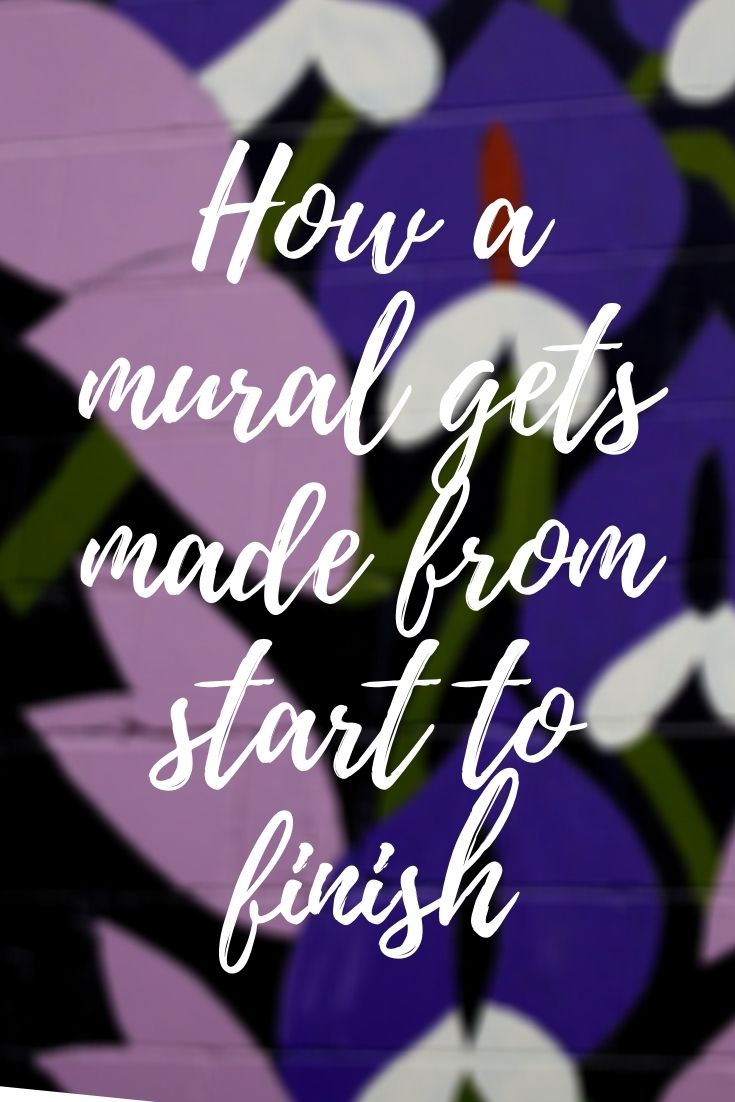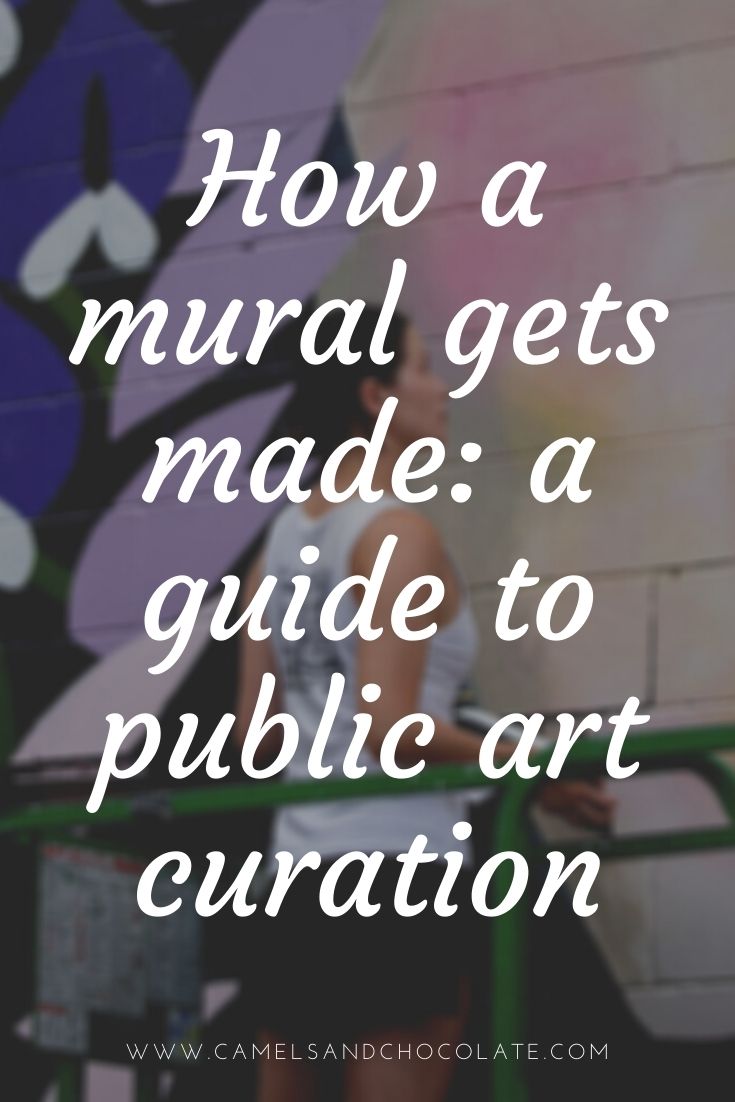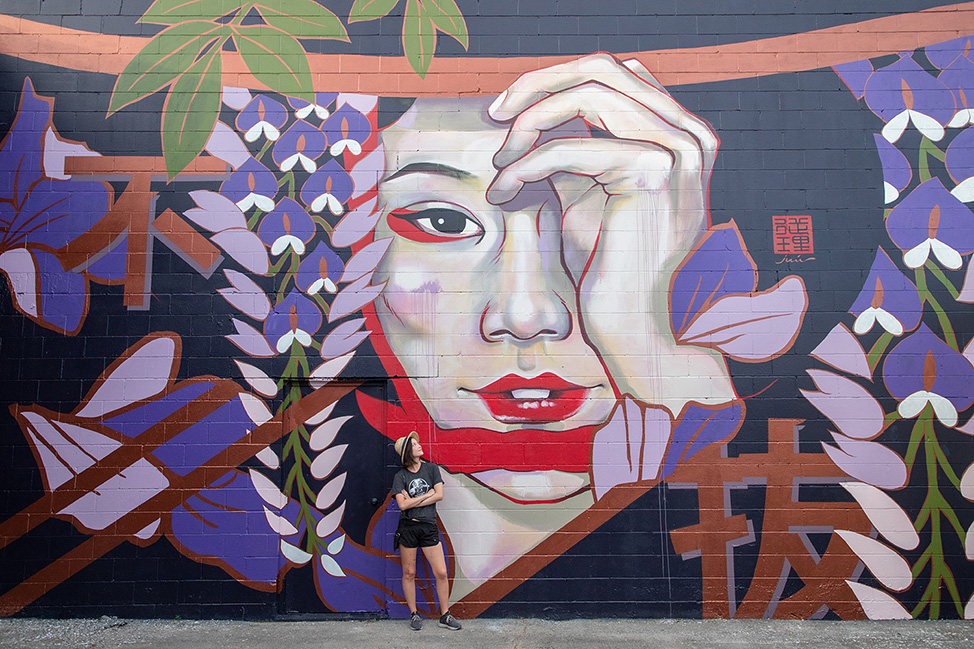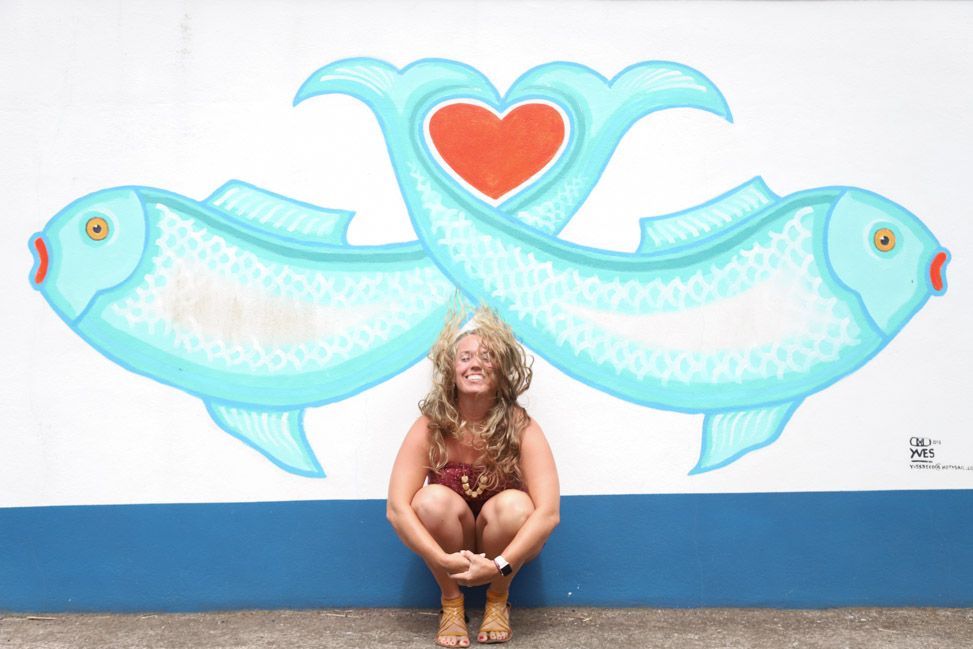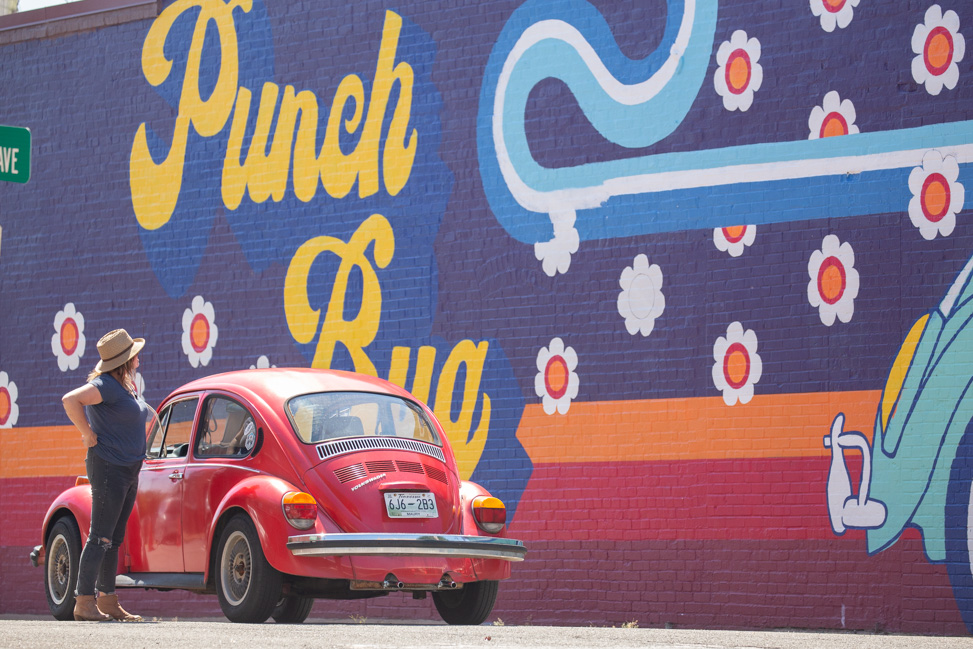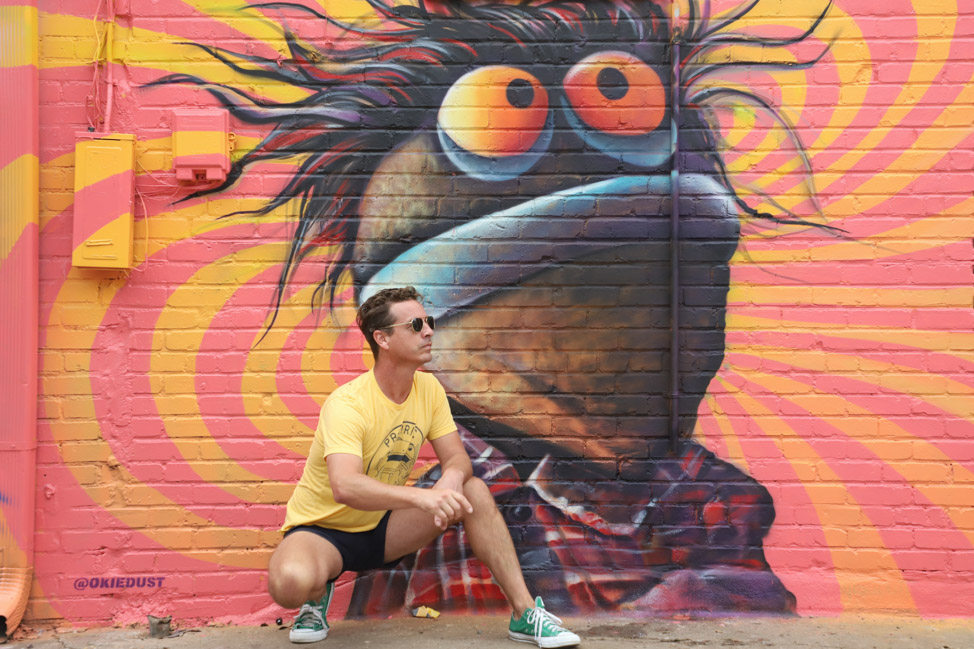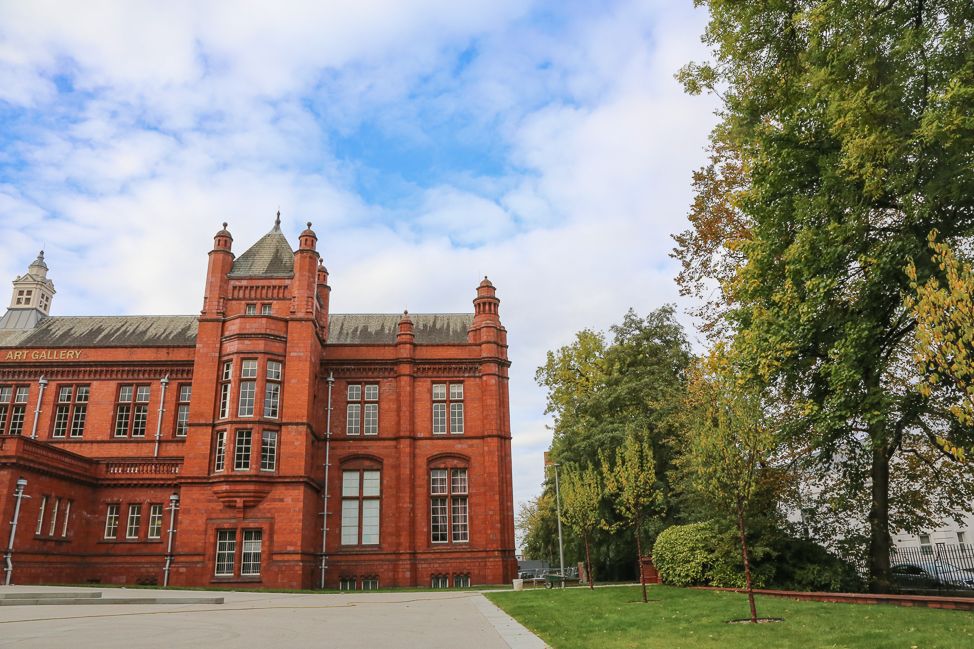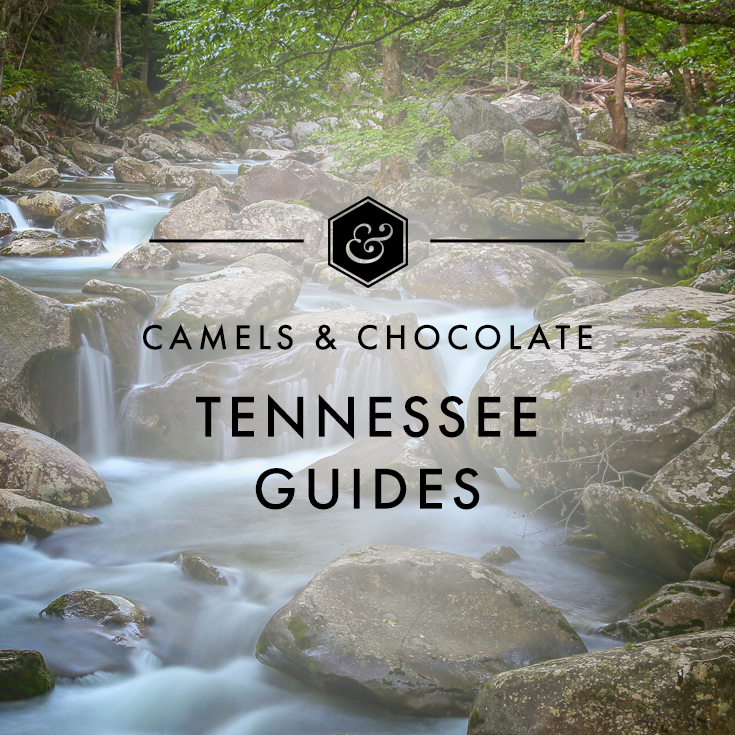One of the questions I often get now that SVV and I are in our third year of running a public art nonprofit is: “How do you find an artist?” which is then often followed by “how long does a mural take?” In every individual case, the process is so dramatically different, so as we get more Walls for Women installations under our belt, I figured I’d shed some light on how a mural is made, as well as tell the story behind each one.
Finding an artist
The story of how we first found Juuri follows suit by how we come across so many of our favorite street artists: through our travels. For the past three years, we’ve been visiting Oklahoma City a couple times annually, and it was on our very first trip there that we came across this stunning piece of public art by Juuri, a Tokyo-born artist who resides in Oklahoma. In fact, this photo I took of SVV being mesmerized by Juuri’s art was the cover of the Visit OKC visitors’ guide last year.
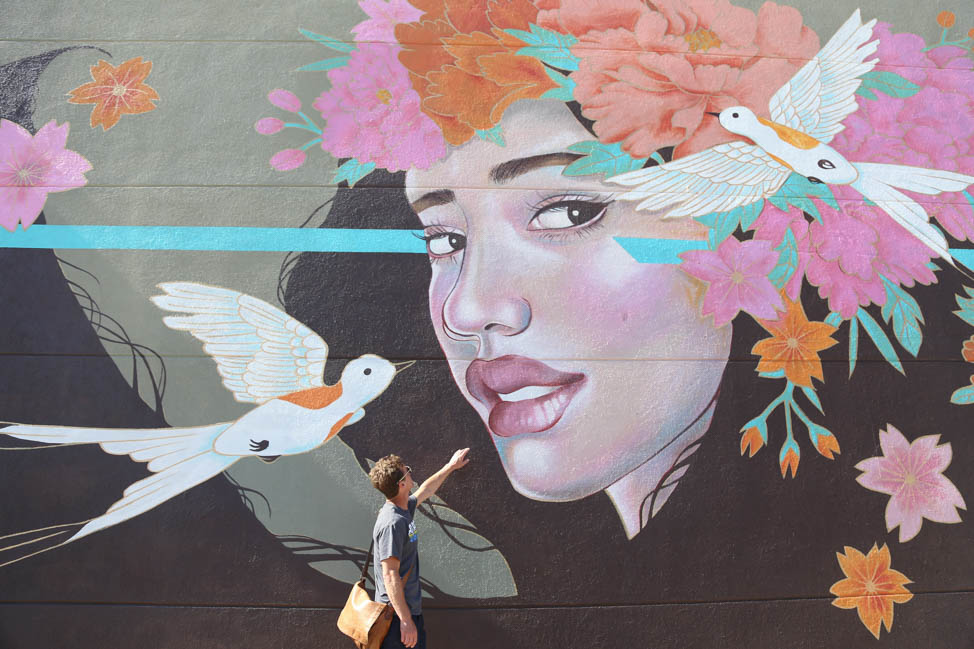
So step one: follow the artist you admire on social media. Interact regularly. Get them familiar with your name. Only then do you creep into their inbox! Muralists are inundated with so many BS requests on the daily that many are understandably wary of a stranger sliding into their DMs. But we followed the above protocol with Juuri, not knowing if she’d ever consider coming to paint in Tennessee, and she responded almost immediately: “I’m in! When do we start?”
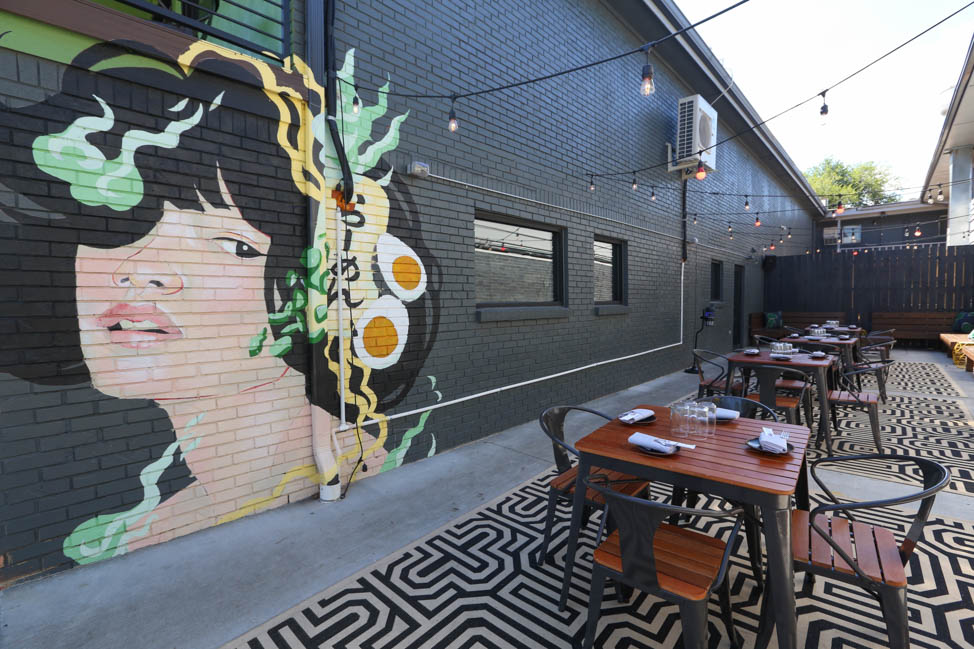
Securing a wall
In this case, we already had both Cycles Gladiator and Sunbelt Rentals on board to sponsor a couple of pieces in rural Tennessee—as well as a creative placemaking grant from the Tennessee Arts Commission—and equally as important, we had a wall, the back alley of Memories Antiques, owned by Sharon and Norman Blair out of Tullahoma, and they had previously told us we could paint anything we wanted there, an art curator’s dream.
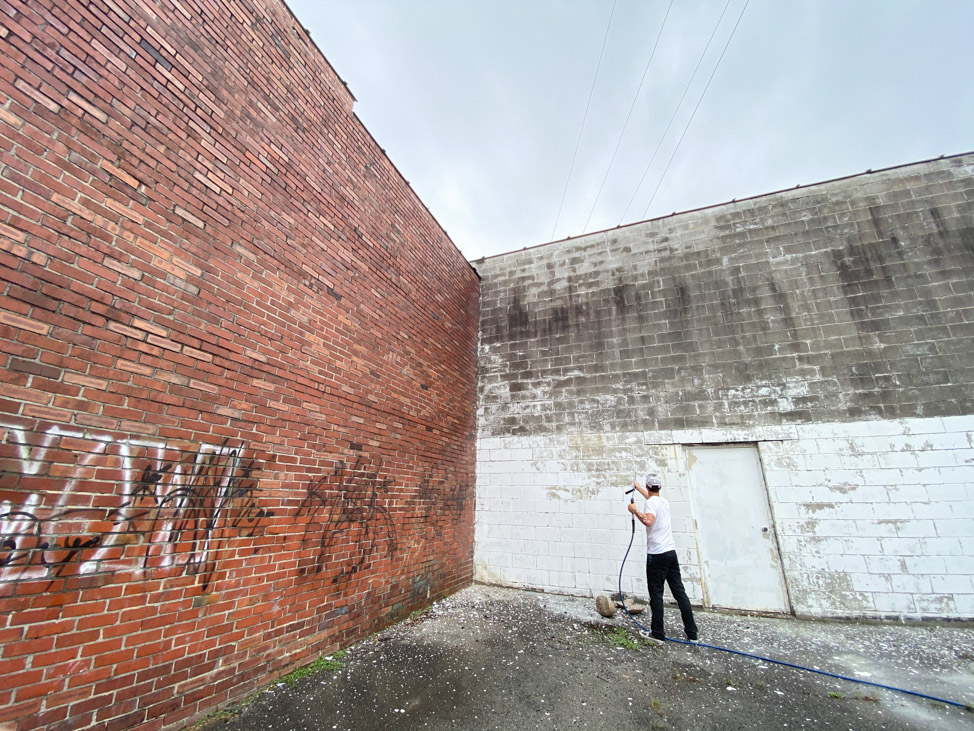
Getting a sense of what it’s going to take to get the wall ready is a very crucial part of the process. In this case, it needed pressure-washing, scraping and a couple coats of primer. We also gauged that we’d need an extension ladder for the prep and a scissor lift from Sunbelt for the actual mural install.
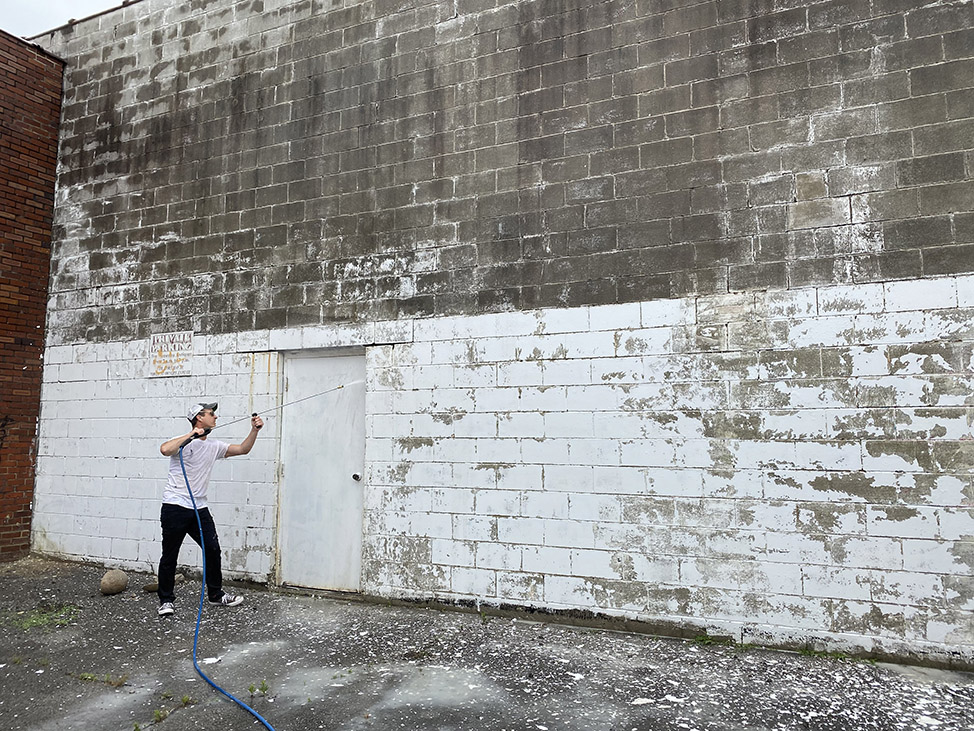
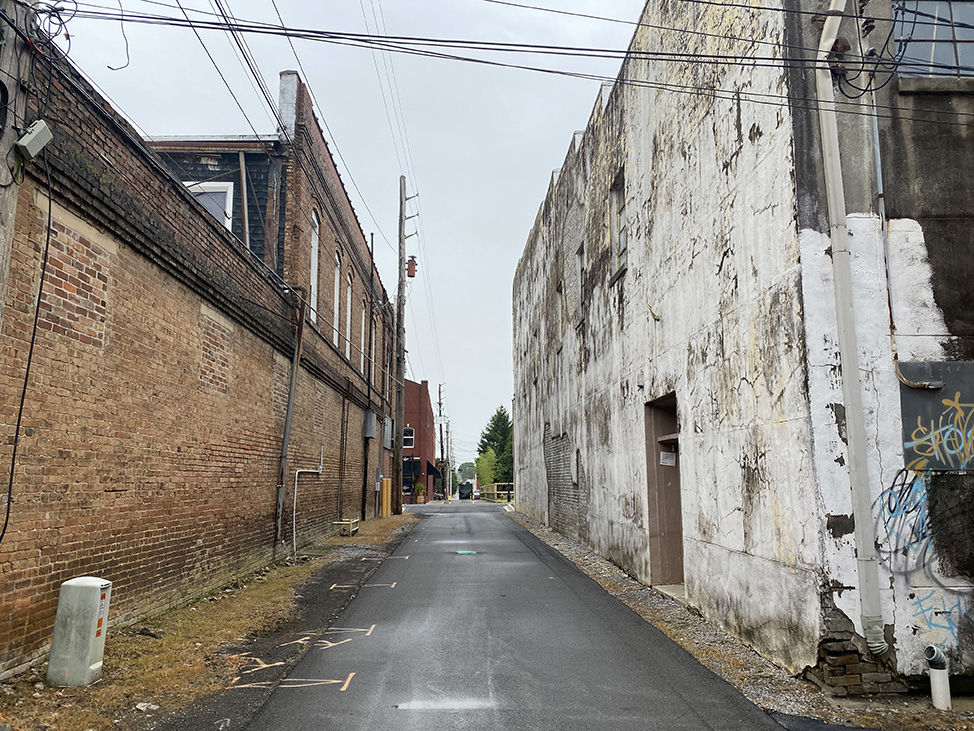
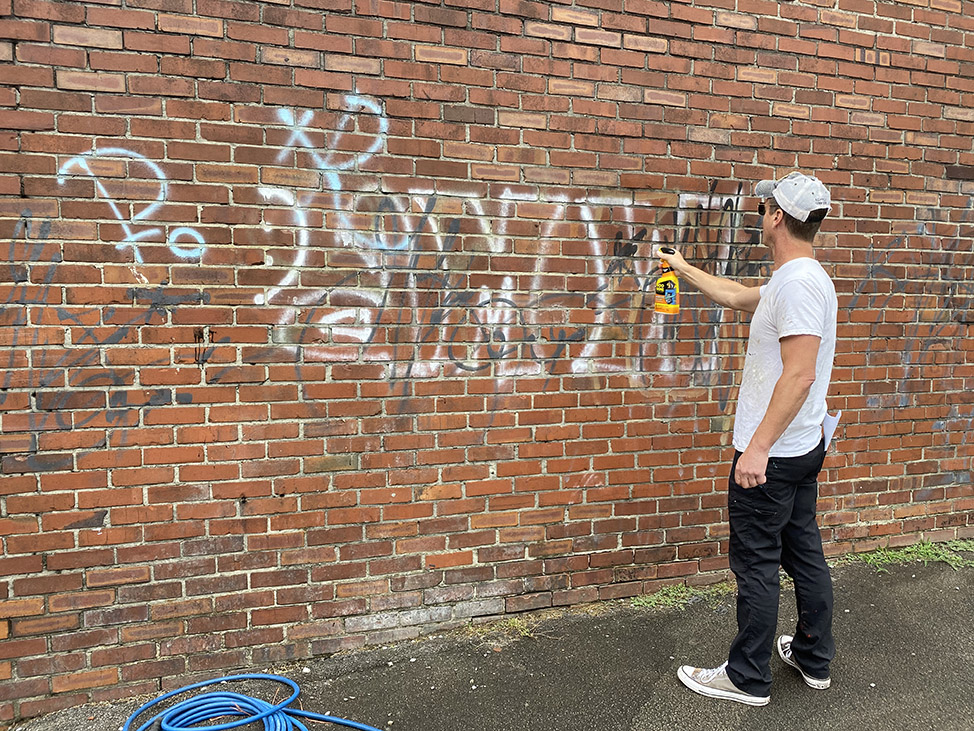
Connecting an artist to the community
Most artists like to get a sense of the community where they’ll be painting beforehand; it often inspires their artistic direction and end work. While we are very adamant about staying out of the creative process unless specifically asked to brainstorm, we were more than happy to point Juuri toward a lead. Juuri, being of Japanese descent, likes to find a connection to her preferred style, so we pointed her toward the story of Camp Forrest in Tullahoma.
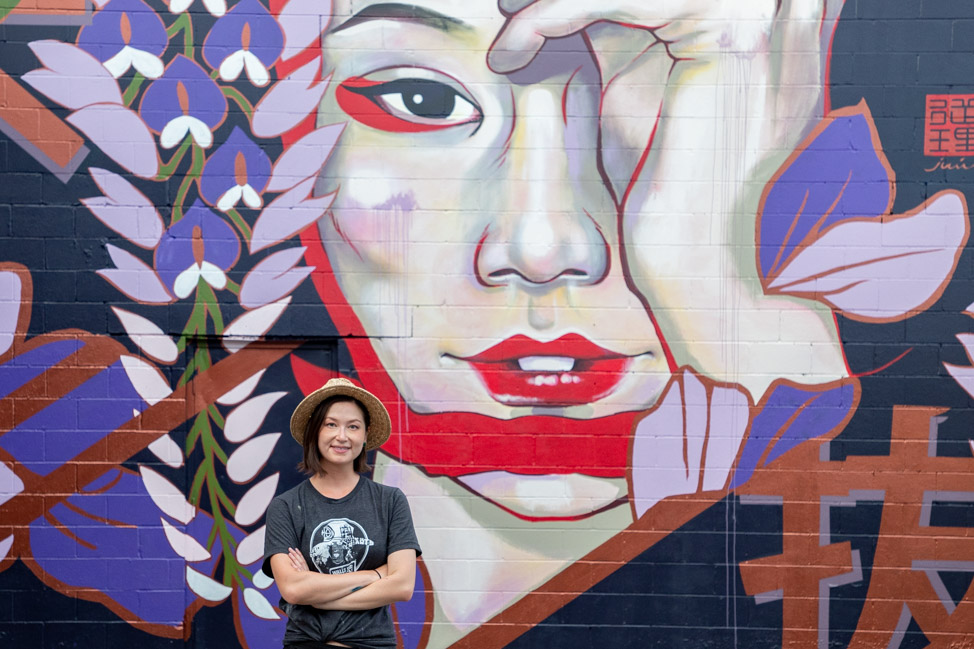
It’s hard to find a lot of information online about Camp Forrest—in fact, even growing up here, I knew nothing about it until I moved back—but, yes, it was named for that Forrest, the abomination in my state’s history. The Tennessee encyclopedia says this about it:
Camp Forrest … was one of the largest U.S. Army training bases during World War II. The camp served as a training facility for eleven infantry divisions, two battalions of Rangers, numerous medical and supply units, and a number of Army Air Corps personnel … [it] also employed thousands of civilians in various support roles and housed German prisoners of war.
Approximately 800 alien civilians were interned at Camp Forrest from January until November 1942, making the camp the first civilian internment camp in the nation. Prisoners of war replaced the civilian internees in 1943, and by the end of the war just over 24,000 members of the Wehrmacht were under guard at the facility.
After the D-Day invasion of France in June 1944, training at Camp Forrest was reduced drastically. The camp was declared “surplus” in September 1945 and given “inactive” status in February 1946. The War Assets Corporation sold off the buildings for lumber, and all equipment, from machine shops to kitchen utensils, was auctioned, although the state retained the land. Today the Arnold Engineering Development Center of the United States Air Force occupies the site. Only a few overgrown concrete foundations remain of Camp Forrest.
As soon as Juuri read this, it took her no time to come up with a design and send us a rendering, which she attached in an email along with this explanation:
The kanji says “Fubatsu” which means “steadfast.” The wisteria flowers represent steadfastness, a very uniquely Japanese quality which is one of the things that probably really helped sustain the people in Camp Forrest. Also, since I’m so into kabuki, “Wisteria Maiden” is a popular play.
One very important thing to note: We have no say in the art that goes up. Neither does the wall host, nor the financial backer. We hire an artist based on their body of work and curate these installations, just as you would a photographer, a writer, a videographer or any other kind of creative. The rendering is more of an idea so we can prepare materials, equipment and the like. The way public art goes so very wrong is when there’s a commission or arts council that doesn’t understand the point of hiring a professional artist and wants to roll up its sleeves and dictate the art, even with the smallest suggestions. That’s how you end up with a hot mess instead of something unique, beautiful and inspiring.
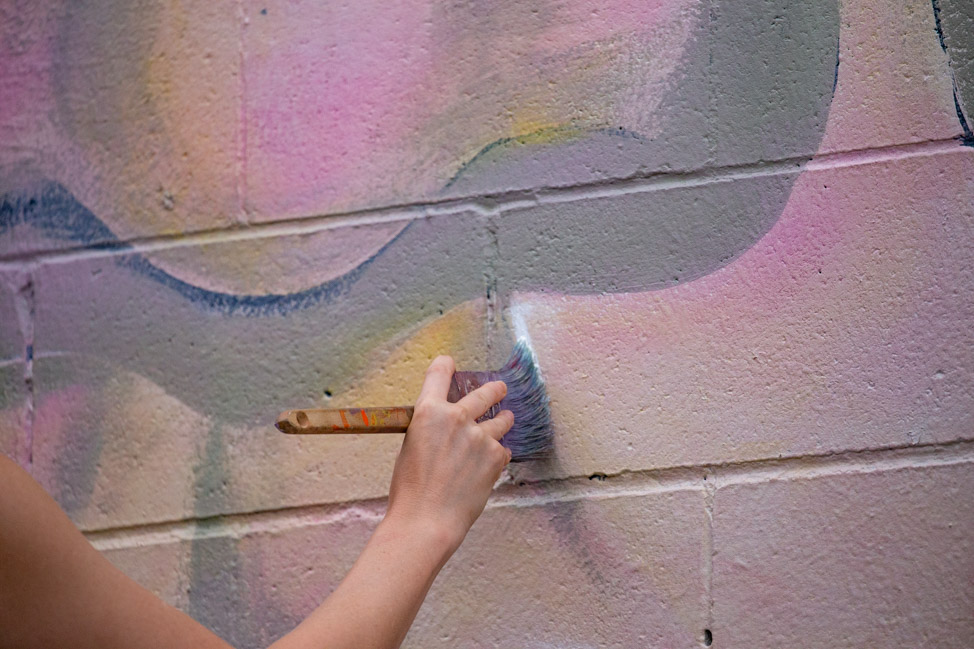
Getting the wall ready for paint
In every case where there’s not a recently painted surface, we prep the wall, mainly because SVV was a commercial painter for the better part of two decades and it hurts his heart to see a half-assed paint job. Which is why we make sure every artist has a durable surface to paint and, most importantly, that the paint will hold up for years, if not decades. It’s also a bonus that the paint itself, by design, protects the building owner’s real estate investment by sealing up the exterior.
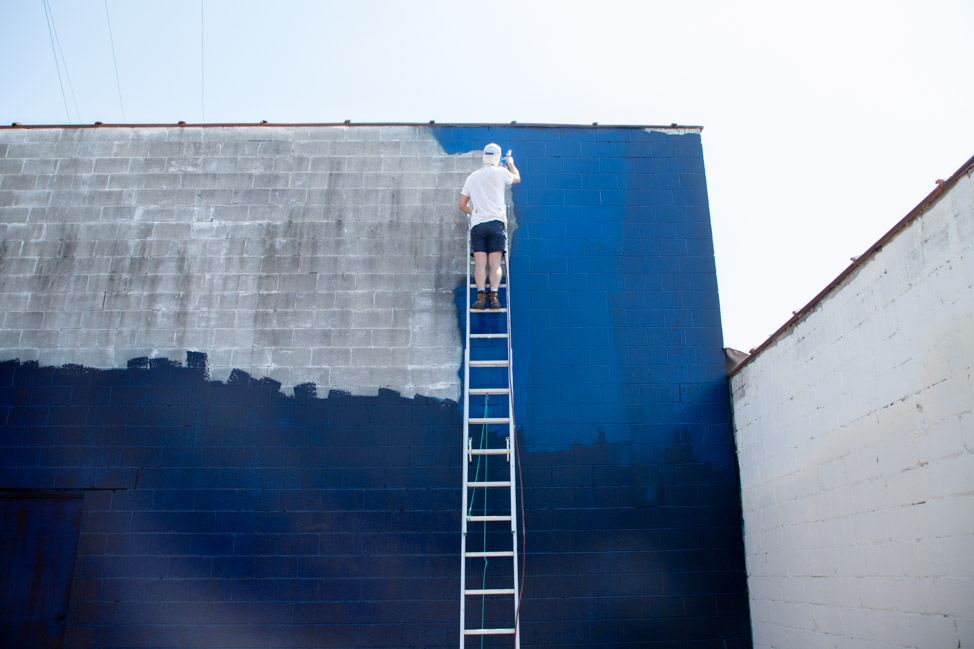
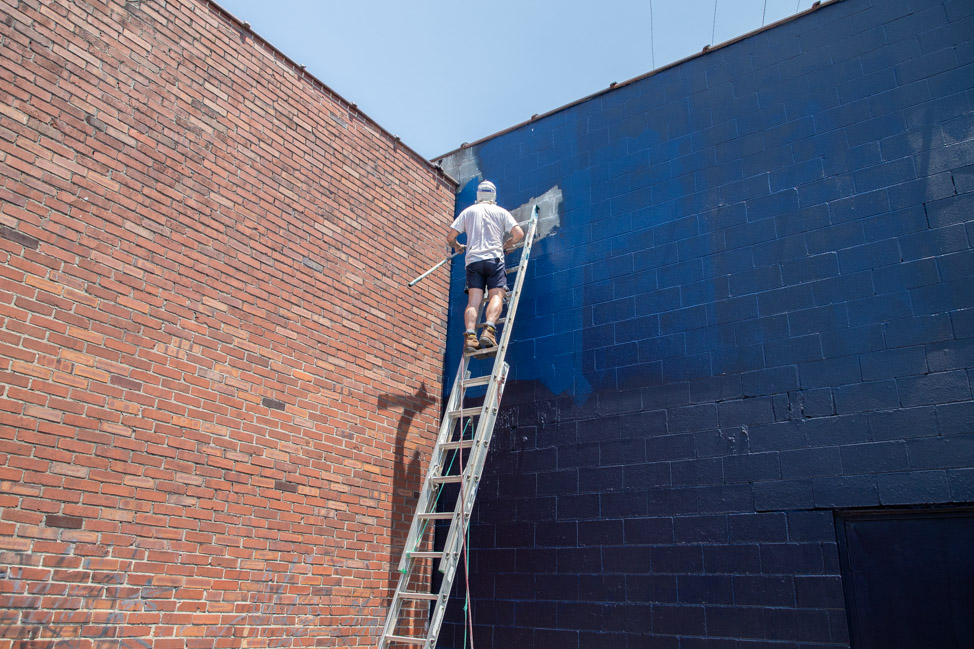
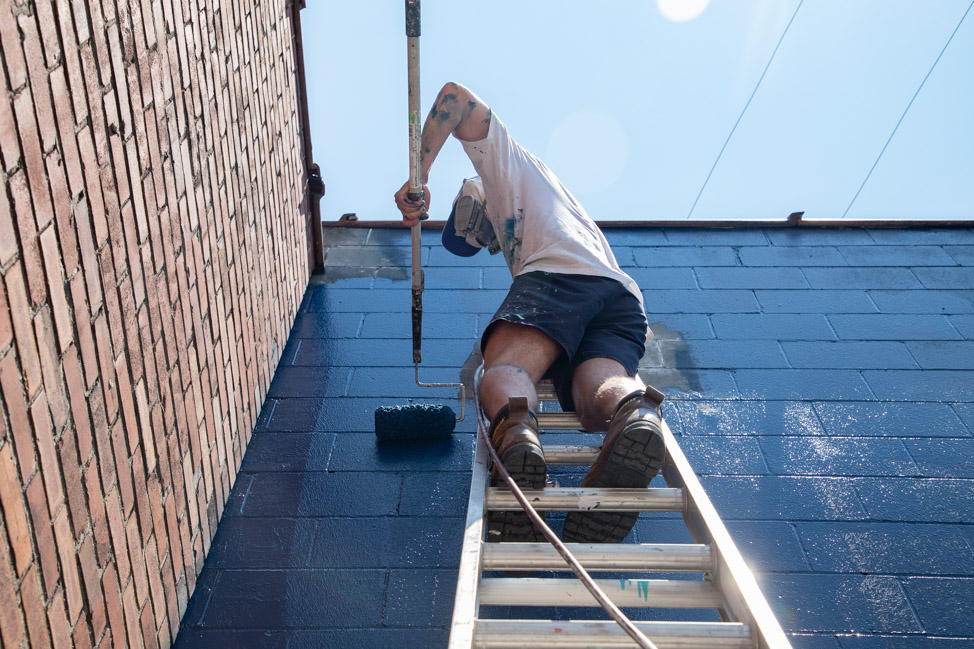
For Memories Antiques, we spent about three days, spread out over two weeks prior to Juuri’s arrival, doing all of the above. The first day was pressure-washing, buffing and prep; the second day was a primer coat; the final morning was a solid top coat of Juuri’s chosen base color.
This also makes it less of a hassle for the artist to get going, when ultimately they are there to paint and not fix up the building, which we see as either the property owner’s job or ours.
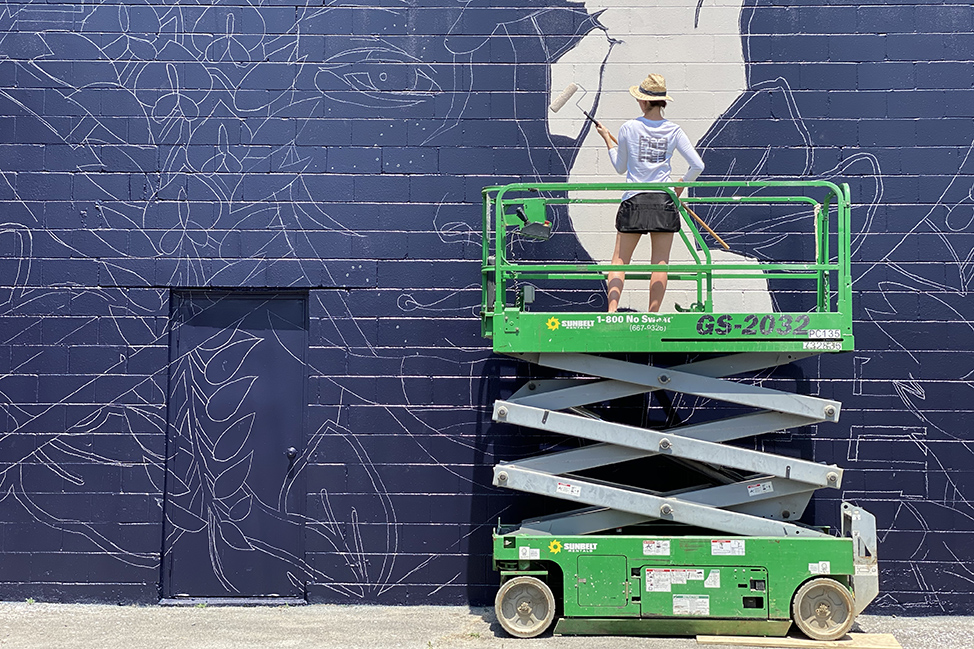
Having the surface prepped and a base coat applied means when the artist arrives, they can start projecting, tracing or mapping out a squiggle grid right away. Just hours after Juuri and her husband Eric touched down in Tennessee, they were at the wall projecting her drawing so they could start painting the following day.
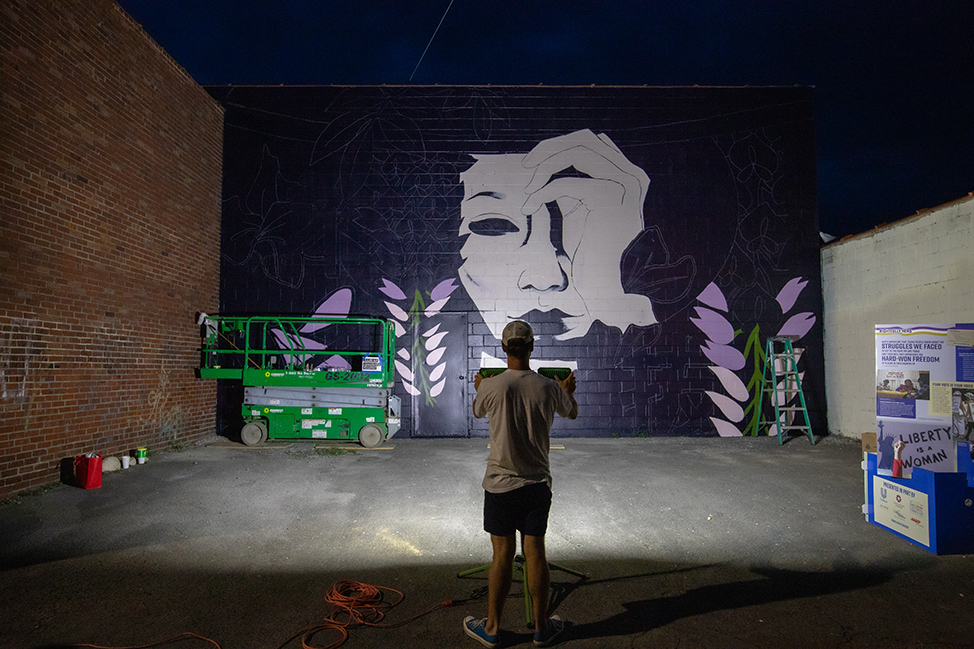
Most artists are pretty self-sufficient, but we like to stay nearby in case they need anything (like an umbrella for day painting or lights for night illumination). Especially when they’re coming from out of town, it’s just easier for us to help out when needed as opposed to them having to stop their process to go to the paint store or track down another obscure supply they may need; plus, many tools they need live inside our very well-stocked, three-bay workshop.
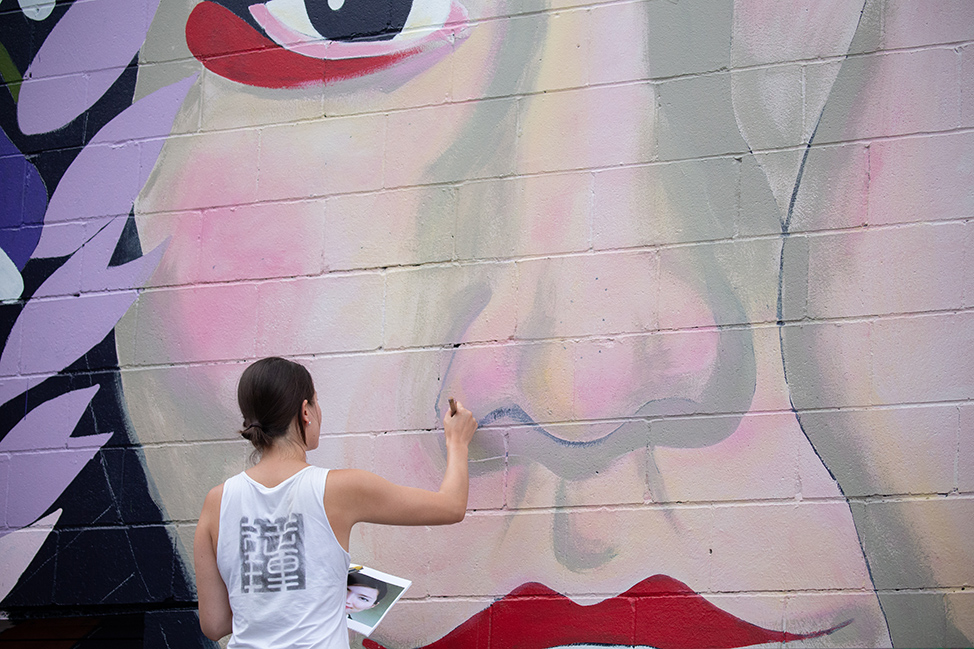
The final product
Once the mural painting gets going, weather permitting, it’s often a relatively quick process; rather, it’s the months preceding the actual installation that are the time-consuming parts. Juuri dealt with a few rain showers and some crippling heat, but she mostly painted at night and it took her just five days to complete this stunning 35-foot-by-25-foot wall in Tullahoma on Wall Street alley behind Memories Antiques.
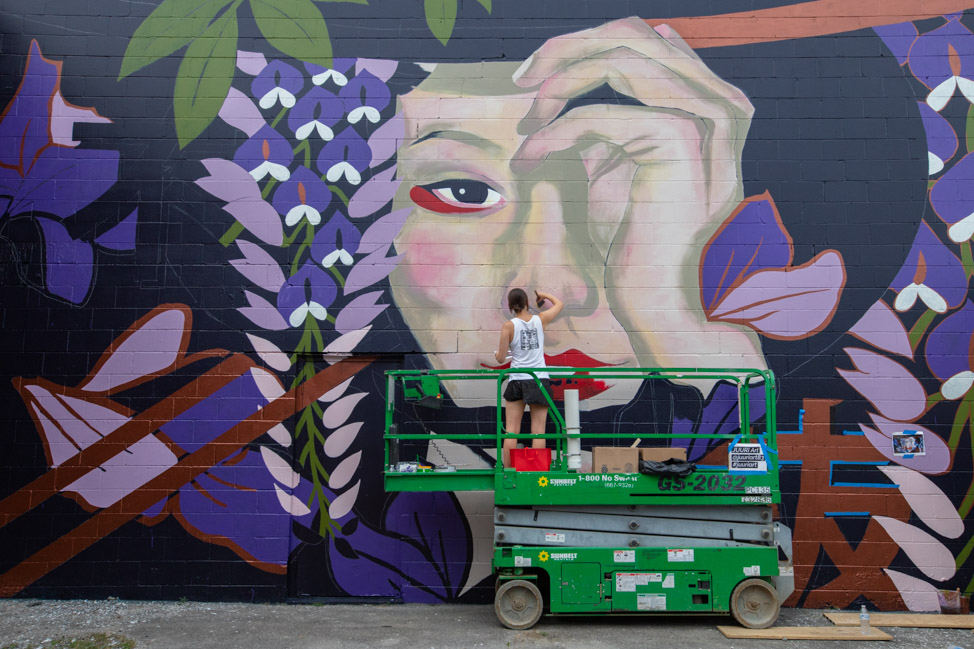
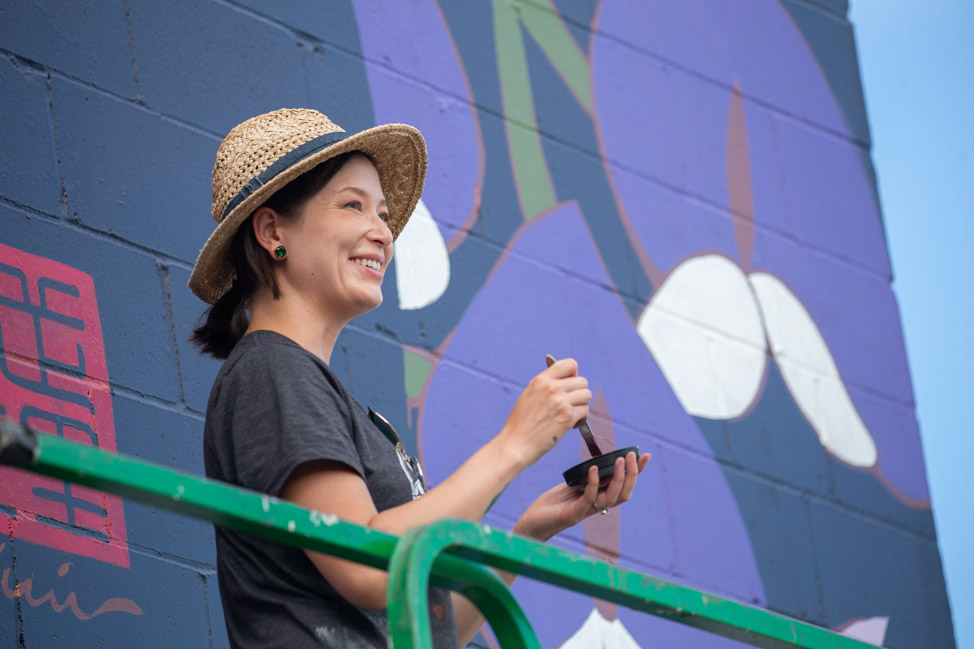
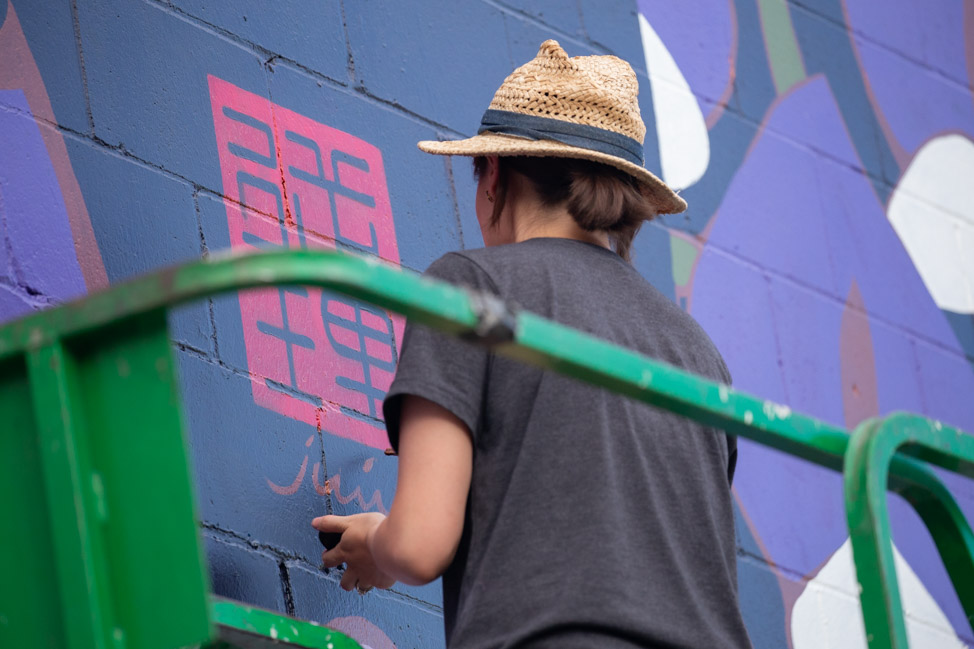
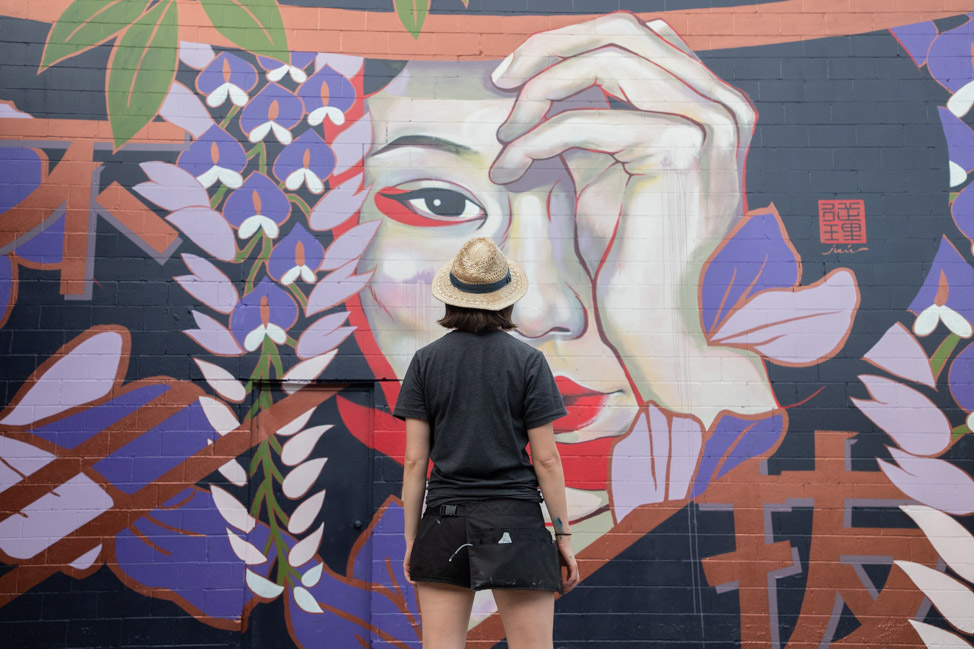
Juuri finished “Wisteria Maiden” on July 24 as the first completed installation of Walls for Women, our all-female mural festival celebrating the 19th Amendment centennial. This new mural in Tullahoma is everything we dreamed she’d be and more and will live in the alley behind Memories Antiques (117 W. Lincoln St.) in the coming years for any of you looking for an an excuse for a road trip.
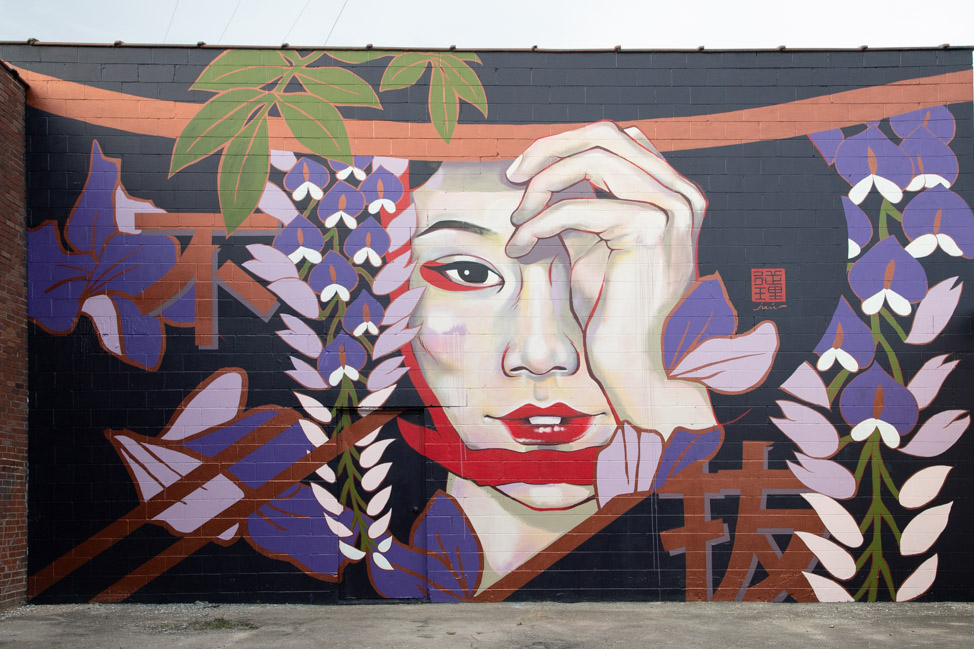
For more public art resources, start here:
- How to start a mural program
- Why it’s important you allow artists creative freedom
- Fact or fiction: debunking myths about murals
- Using murals in marketing: are you violating somebody’s copyright?
PIN IT! SAVE THIS POST FOR LATER
